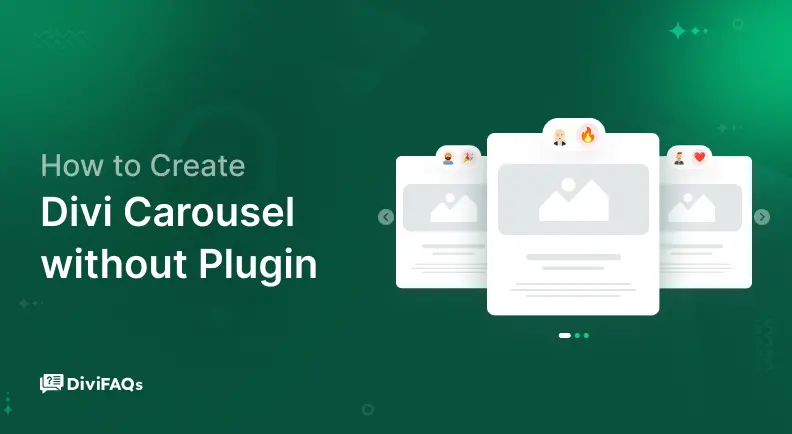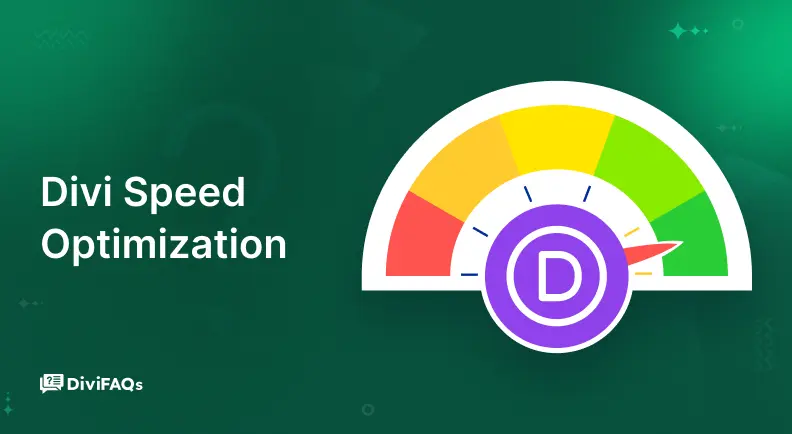How do you optimize your Divi website so it generates traffic, increases conversions, and makes it more visible online?
The short answer is – SEO!
SEO helps get organic traffic, and 53.3% of all website traffic comes from organic search.
Lucky for you, Divi has built-in SEO settings, and it also seamlessly integrates with the most popular SEO plugin RankMath.
In this article, we’ll give you comprehensive knowledge about the Divi SEO Guide, as well as how to optimize a Divi-powered site with ease.
Let’s talk about Divi and SEO.
Divi SEO Guide With Divi Theme Options
As we’ve mentioned earlier, Divi itself offers SEO settings options to boost its user’s websites’ traffic, conversions, and online presence. Let’s explore all of these options and get to know their working process:
Homepage SEO
Divi’s Homepage SEO option allows you to optimize your website’s homepage using a variety of features. These features are organized into two sections: a set of toggles that enable or disable specific options, and a set of fields where you can input information for those options:
Custom Title:
By default, you can easily set the title through Dashboard > Settings > General, which will be applied globally throughout your site. But the homepage SEO’s custom title option lets you set a custom title specifically for the homepage.
As a result, you’ll have more control over setting an attractive title that reflects your homepage’s content. Site title is the main thing visitors will see in search engine results pages (SERPs) and browser tabs.
Simply enable the “custom title” and then input the information you want to set for the site title in the “Homepage custom title (if enabled)” field.
Meta Description:
Like the site title, WordPress meta description is applied universally across all pages. On the other hand, Divi offers the flexibility to customize it exclusively for the homepage. Toggle on the ‘’Meta Description’’ section and define the meta description specifically for your home page:
Meta Keywords:
Meta keywords were once used to inform search engines about website content, but their impact has significantly diminished due to past misuse. Today, major search engines, including Google, no longer consider “meta keywords” as a factor when determining a page’s ranking.
If, however, you still wish to use them, simply toggle on the option and input your necessary tags in the ‘Homepage meta keywords (if enabled)’ field:
Canonical URLs:
It’s common to have duplicate URLs on your site, such as for different regions or device versions. However, search engines penalize websites for duplicate content or URLs and Divi will help you avoid such issues.
Enabling the Canonical URLs option allows the search engine to automatically select the best URL for your homepage, improving SEO and indexing efficiency.
Choose Autogeneration Method:
Even if you don’t set a custom title for your website’s homepage, you can still control how its title is generated.
Define Value Separator:
When you disable the custom title option and choose the autogeneration method, you can set a separator character for the generated title. Any character can be used as a separator, but the most common options are pipe symbol (|) or hyphen (-).
Note: Don’t forget to click the ‘’Save Changes’’ button on the ‘’SEO’’ tab in theme options to confirm your edits and make them live whenever you make any adjustments
Single Post Page SEO
Similar to the Homepage module, Single Post Page SEO tab provides a comprehensive set of tools for optimizing your individual blog posts or pages for search engines. These features are conveniently organized into two sections with toggle buttons and input fields:
Custom Titles:
While by default, theme creates a post title based on your post or blog name, Divi lets you set a custom title for your page and post. Toggle on the “Custom Titles,” click on “Save Changes” and then follow the below path:
- Go to Pages > Add New Page.
- Click the three dots (options) in the top right corner and select Preferences.
- Choose the Panels tab.
- Tap the “Custom Fields” option and click “Show & Reload Page.”
You’ll find the “Custom Fields” option at the bottom of the page or post you’re creating. Click on it:
Click on the ‘’Add New Custom Field’’ section ‘’-Select-’’ option, choose “SEO_title,” and then enter your desired title in the ‘’Value’’ box. After that, click “Add Custom Field” to save the changes.
Click ‘’Publish’’ or ‘’Update’’’ and then see the result.
Custom Description:
You can set a custom description for each page or post with Divi’s “Single Page Post SEO” custom title option. Like ‘’Custom Title,’’ follow the same steps to enable ‘’Custom Description.’’
Save changes, then go to the page or post edit mode, select ‘’SEO_description’’ in ‘’Add New Custom Field,’’ input your desired description in the ‘’Value’’ box, and click ‘’Add Custom Field’’ to save changes.
Click ‘’Publish’’ or ‘’Update’’’ and then see the result.
Custom keywords:
Similar to the custom title and description, follow the same instructions to enable custom keywords. Then, go to the page or post edit mode, select ‘SEO_keyword,’ and input keywords in the value box.
Canonical URLs:
Enabling ‘’Canonical URLs’’ helps search engines choose the preferred version of a single page or post for indexing and ranking. This option is particularly useful for preventing duplicate content issues
- Choose Autogeneration and Define a Separator:
Even if you’re not utilizing custom post titles and rely on autogeneration, you still have control over how those titles appear. Also, you can select a separator between your blog name and the generated title.
Index Page SEO
Index Page SEO options are specifically designed to optimize your blog’s main page, commonly referred to as the index page or blog archive page. These SEO options comprise a set of features to make your index page search engine friendly:
- Canonical URLs: Prevent duplicate content issues.
- Meta Descriptions: Set a custom meta description for the index page.
- Choose Title Autogeneration Method: Select from three different title autogeneration options, if necessary.
- Define a Character to Separate Blog Name and Post Title: Set a separator according to your needs.
Divi SEO Guide With RankMath (Third-party Plugin)
RankMath is a powerful and feature-rich SEO plugin that integrates seamlessly with the Divi visual builder. It offers a user-friendly interface, powerful SEO tools, and much more to help you achieve your website-related goals.
It comes in both free and premium versions, and the free version lets you access basic-level SEO settings. Hence, we recommend the paid version for users who want to take full advantage of RankMath’s capabilities and achieve optimal SEO results.
Once you install RankMath, you’ll find the RankMath SEO icon next to the Divi visual builder’s settings icon. After clicking on it, you can access a wide range of tools and features to optimize:
- General Tab
RankMath’s general tab provides on-page SEO analysis, including keyword analysis, link assessment, and image optimization. You will receive suggestions on how to improve title tags, meta descriptions, keyword usage, and more on this tab.
- Snippet Editor: Clicking on “Edit Snippet” opens the “Preview Snippet Editor” window, where you can set a custom title, permalink, and description for your page or post. You can also see how your changes will appear in search results (SERPs).
- Focus Keyword: You can choose specific keywords that you want your page or post to rank for in search engine results.
- Basic SEO: This section will provide a comprehensive checklist of essential SEO checks and suggestions to ensure your page or post is properly configured for search engine visibility.
- Additional, Title Readability and Content Readability: With these three options, you can improve your page or post, and they’ll analyze your title and content for better search engine optimization.
- Social Tab
Within the social tab, you can take control of how your content appears when shared on social media platforms. You can customize the title, and description, and even add an icon overlay to your thumbnail for an impactful social share
- Schema Tab
The Schema tab in Rank Math allows you to incorporate structured data markup into your website. This set of data aids search engines in comprehending the meaning and context of your content. You have access to 14 different types of Schema Markup to configure for the page you’re working on with Divi.
Other Divi SEO Optimization Options
Apart from Divi’s built-in SEO settings and RankMath plugin, there are additional strategies you can employ to enhance your site’s SEO friendliness. Here are some effective techniques to consider:
- Permalinks
A permalink is a persistent URL that directs to a specific web page or resource on a website. It’s a critical element for SEO, contributing to improved search engine crawlability and increased visibility of your website with proper permalinks.
Therefore, it’s necessary to choose a descriptive and keyword-rich permalink structure from the beginning. The best practice is to opt for the ‘’Post name’’ structure.”
- Image Optimization
There are numerous ways to optimize images for websites, and Divi offers specific settings for this. Divi allows you to use alt text, available in all Divi modules with an image option.
Enable the page builder, then choose the ‘’Advanced’’ option among content, design, and advanced. In the advanced tab, find ‘Attributes,’ where you can enter image alt text.
- Responsive Design
Whenever you’re creating or designing a page or post in Divi, you have the option to preview how it looks on various devices. Click on the Divi Builder’s settings, where you’ll find options for desktop, tablet, and mobile viewing.
For phone responsiveness, click on the mobile viewing option and individually make all content responsive. Be sure to click on the ‘Phone’ icon when customizing anything for phones. The same rule applies to tablets.
- Internal Linking Strategies
Proper use of internal links involves strategically placing links within your Divi website’s content that connect to other relevant pages on your site. This is a great way to enhance users’ navigation and improve website structure and SEO.
- Speed Optimization
Speed optimization is a broad topic that requires complete content for a step-by-step guide. However, you can start by following some simple steps to initially speed up your site, including:
- Ensure you’re using the updated or latest versions of the theme and plugins.
- Utilize a caching plugin.
- Always compress images and use the appropriate file format.
- Minimize CSS and JavaScript.
- Distribute content across servers globally.
- Minimize third-party scripts for quicker rendering.
Closing Thoughts
Implementing our comprehensive Divi SEO guide will certainly optimize your website, leading to a significant increase in traffic, conversions, and enhanced online visibility.
After launching your Divi website, follow our guide to enable Divi’s SEO settings. Additionally, consider installing and configuring RankMath for further SEO optimization.
Remember to implement provided additional SEO for Divi optimization techniques to improve your website’s ranking in search engine results pages (SERPs) and attract considerably more organic traffic.
Note: Check out our Divi SEO checklist to transform your Divi website into a search engine powerhouse.





0 Comments